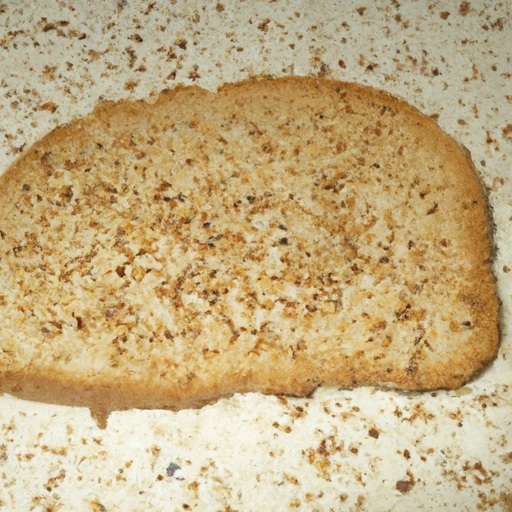Crumb
Description

The ingredient 'crumb' refers to small particles or pieces of bread, crackers, or any similar baked goods. These tiny pieces are often used as a filler, topping, or coating in a variety of dishes. Crumbs can be made from a wide array of bread types or baked products, whether fresh, stale, or dried. Different varieties of crumbs exist, with sizes ranging from fine, powdery textures to coarse, chunky pieces. This versatile ingredient serves many purposes in the culinary world, from adding texture and flavor to dishes to providing a way to utilize leftover bread.
Common uses
Crumbs are commonly used as a binding agent in meatballs and meatloaves, as a crunchy topping for baked dishes, and as a coating for fried foods. Additionally, they can be mixed into stuffings, used as a thickener for soups and stews, or utilized in dessert recipes to create texture.
Nutritional value
Calories
The calorie content of crumbs depends on the type of bread or baked good they are made from. Typically, bread crumbs have about 110 kcal per ounce (4 kcal/g or approximately 31 kcal per tablespoon).
Protein
Protein content is relatively low, with around 4 grams per ounce (0.14 oz/g or approximately 1 gram per tablespoon).
Fat
Fat content can vary, but it is usually around 1.5 grams per ounce (0.05 oz/g or roughly 0.4 grams per tablespoon), depending on whether the bread was made with added fats.
Carbohydrates
Carbohydrates are the primary macronutrient in crumbs, with about 18 grams per ounce (0.63 oz/g or around 5 grams per tablespoon).
Vitamins
Some vitamins, particularly B vitamins, may be present in crumbs, depending on the nutritional content of the original bread.
Minerals
Minerals such as iron, selenium, and calcium can be found in crumbs, again depending on the type of bread used.
Health benefits
Whole grain crumbs can offer dietary fiber and essential nutrients, contributing to digestive health and reduced risk of chronic diseases. However, the benefits largely depend on the nutritional quality of the bread used to make the crumbs.
Potential risks
Consuming large amounts of breadcrumbs made from refined grains can contribute to a higher intake of carbohydrates and calories, potentially leading to weight gain. Additionally, some individuals may need to consider gluten content if they have sensitivities or celiac disease.
Common recipes
Recipes that commonly use crumbs include meatballs, breaded chicken, gratins, casserole toppings, and breadcrumb-coated fried fish.
Cooking methods
Crumbs can be toasted, fried, or baked depending on the recipe requirements. They are often used to create a crispy coating or to add a golden-brown finish to baked dishes.
Pairing with other ingredients
Crumbs pair well with herbs and spices to enhance their flavor. They also work well with cheese, especially when used as a topping, and can be combined with nuts or seeds for added texture in salads and other dishes.
Summary
Crumb is a versatile and ubiquitous ingredient that plays an essential role in both sweet and savory dishes. It offers a way to add texture, flavor, and substance to recipes, while also serving as a means to reduce food waste. The nutritional value of crumbs varies depending on the source material, but they can contribute to a balanced diet when used in moderation and made from whole grains.